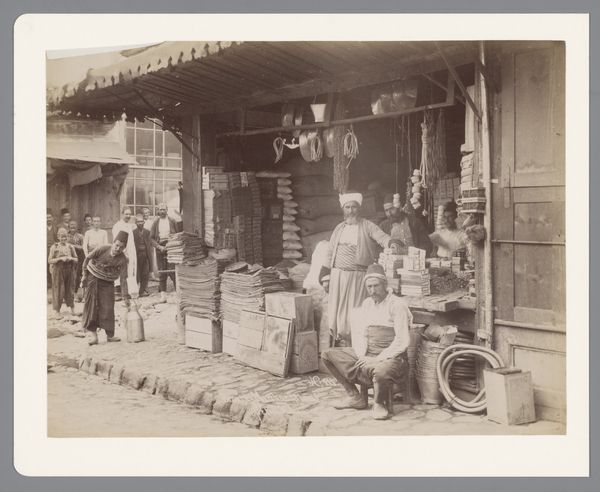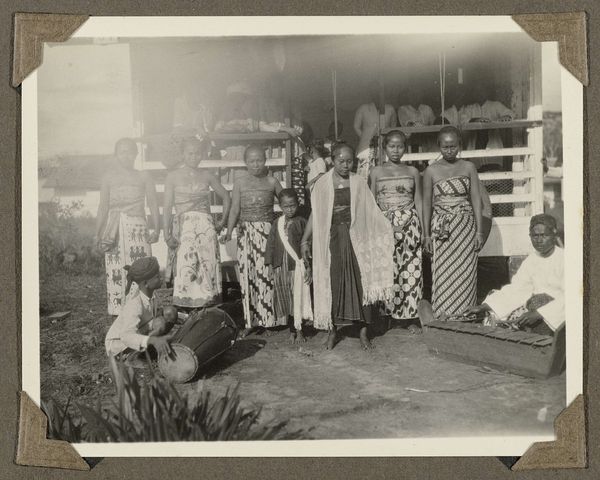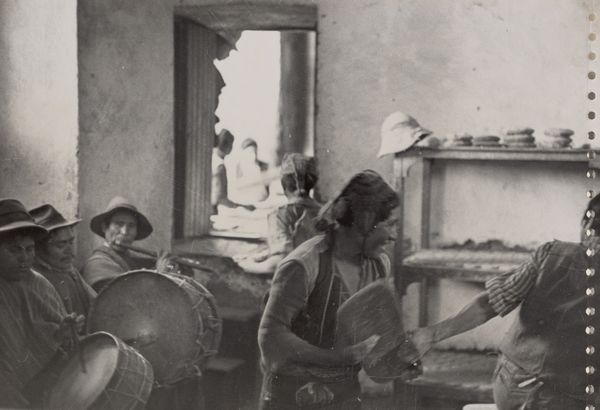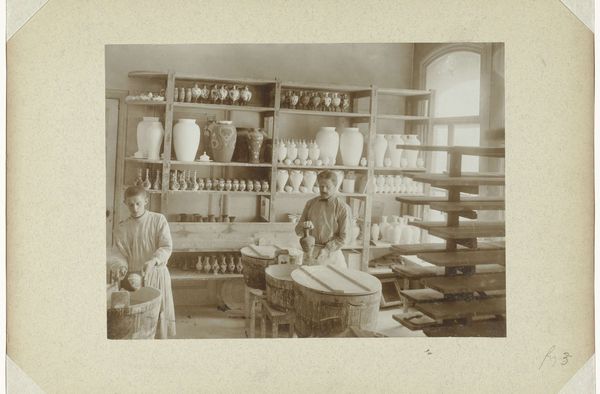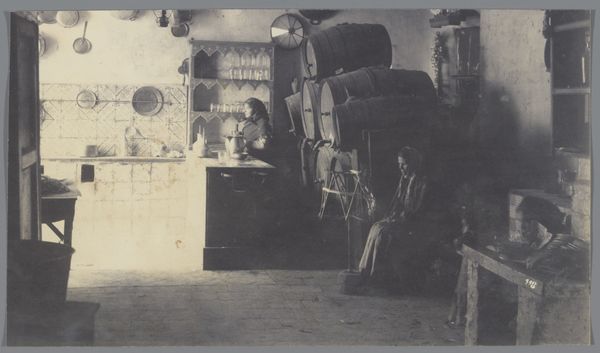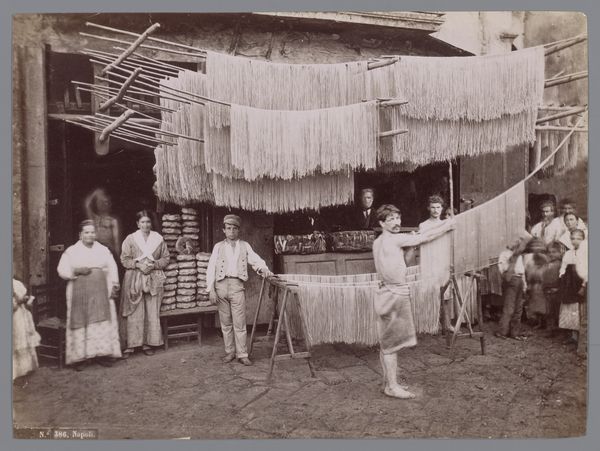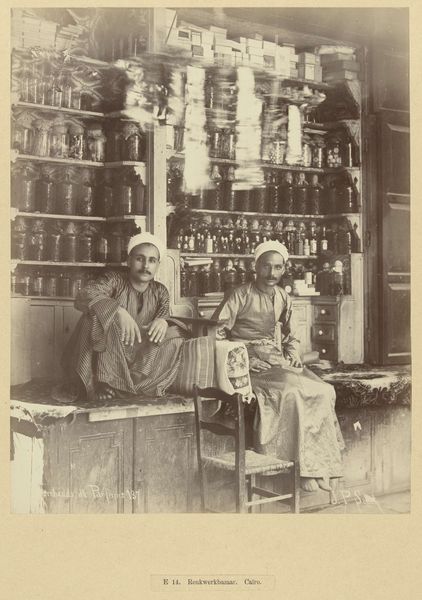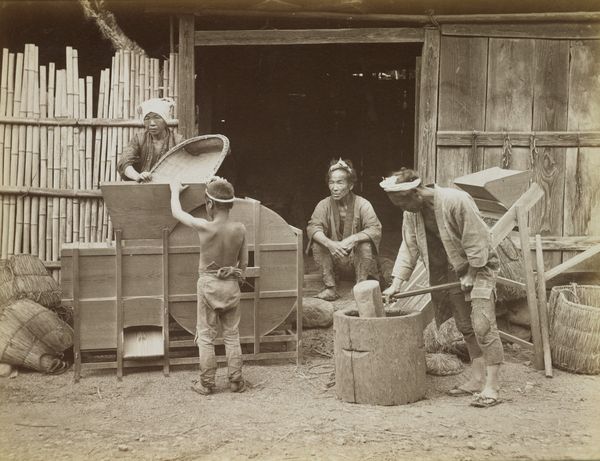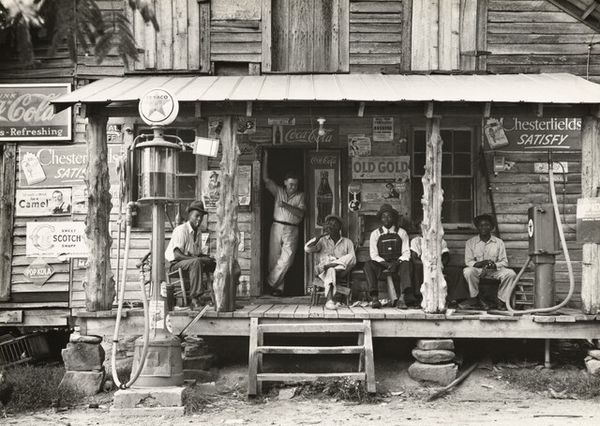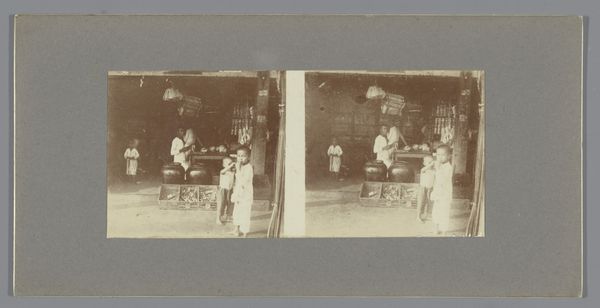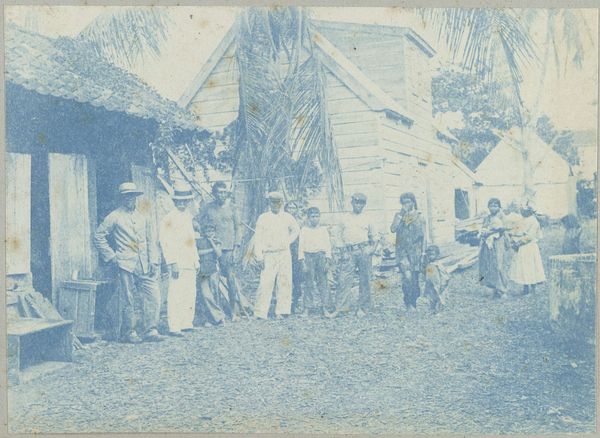
photography
#
ukiyo-e
#
photography
#
orientalism
#
genre-painting
Dimensions: 7 7/16 x 9 7/16 in. (18.89 x 23.97 cm) (sheet)9 x 13 x 1 1/2 in. (22.9 x 33 x 3.8 cm) (album, closed)
Copyright: Public Domain
Editor: This is a photograph entitled "Curio Store," likely from the late 19th or early 20th century. The scene depicts what seems to be a small shop with craftspeople. The array of goods creates a sense of abundance. What cultural narratives are at play in a photograph like this? Curator: Well, the very title, "Curio Store," gives us a point of entry. It speaks to the Western fascination with collecting objects from other cultures, particularly during this period. This image flirts with what we might call Orientalism, where the East is romanticized and, in some ways, commodified for a Western audience. What do you notice about the people in the photograph? Editor: I see what appears to be a Western woman sitting on the porch of the store, observing the scene. Her presence seems to reinforce the idea of an outsider looking in. Curator: Precisely. Consider who this photograph was likely made for. Was it meant to be an authentic representation, or a constructed performance of Japanese life for consumption elsewhere? And what does that say about the power dynamics at play during this time of increased globalization and imperialism? Think about whose gaze is centered, and whose story is being told – or perhaps, sold. Editor: So, it’s not just a picture of a shop; it's a carefully constructed image intended to fulfill certain expectations and desires? Curator: Exactly! It's a glimpse into a specific moment in history, revealing the complexities of cultural exchange and the potential for misrepresentation inherent in the act of observation and documentation. Does seeing it through this lens change your initial impression of abundance? Editor: Absolutely, I see how what I perceived as “abundance” could actually be the exoticization and commercialization of Japanese culture, packaged for Western consumption. Thank you! Curator: And thank you for engaging critically with the photograph. These historical images demand this kind of layered analysis!
Comments
No comments
Be the first to comment and join the conversation on the ultimate creative platform.
